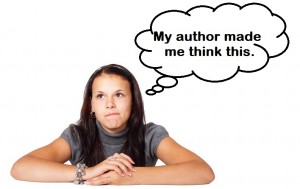If Poseidon’s Scribe suggests you incorporate an appeal to all five senses in your writing, that’s not exactly original advice. But why are writers told to do this? And how do you go about it?
The reason for using all the senses is to make your scenes more vivid, distinct, and real for the reader. You’re trying to take your reader away from her world where she is sitting and reading a book, just sweep her away to your made-up world. We speak of “painting a picture” in writing, but it should be more than that. It should be a multi-sensory experience. It’s like a Star Trek transporter machine that can move a person in an instant to a different location for a full immersion experience.
 Artists, too, often bring the senses into their work. This is “Still-life with Chessboard (the Five Senses)” by the 17th Century painter Lubin Baugin.
Artists, too, often bring the senses into their work. This is “Still-life with Chessboard (the Five Senses)” by the 17th Century painter Lubin Baugin.
Each of the senses has certain properties. Although they are obvious from lifelong experience, let’s think about each one from a writer’s point of view.
- Our primary sense is sight, and that’s usually the first way a character perceives his surroundings. Human sight is most especially tuned to moving objects, so characters notice them first of all. Depriving a character of sight using darkness or interfering objects can heighten tension.
- Hearing is our secondary sense, and also has a long range. Characters can hear things around corners and thus detect them before seeing them at times.
- Smell has a strong link to mood and memory, and thus can provide a great opportunity for the reader to understand the point-of-view character’s temperament and background.
- Taste is coupled to the sense of smell. Letting a character experience food and drink in a scene can enhance the overall impression for the reader. Remember that characters can learn things by tasting even non-food items, such as deciding whether a liquid is water or oil, for example, when gathering evidence.
- The sense of touch is probably the most intimate. It’s the only sense without a specific organ, and the only one we can’t block out except through numbness.
If you open up your writing to appeal to all the senses, you’ll find a wealth of new adjectives at your disposal. There are many great descriptive words that apply to the non-sight senses. These sensory descriptions should be used with purposeful ends in mind, though. You’re trying to advance your plot, reveal character attitudes, or set a scene, not to demonstrate your knowledge of the senses.
Through practice you can improve the perceptiveness and sharpness of your senses as well as your ability to write better sensory descriptions. It’s just like improving any other skill. I’ll have more to say about that in a future blog entry.
I should caution you not to overdo it, though. Modern readers dislike, and often skip, long paragraphs of description. It’s best to sprinkle your sense-based descriptions in small chunks between and among character thoughts and dialogue throughout the scene. This avoids overloading and boring the reader, and also gives the reader occasional reminders about where the characters are and the state of their surroundings.
As always, I welcome your comments on this topic. From what I’ve seen, heard, smelled, tasted, and felt, this concludes another blog entry by–
Poseidon’s Scribe











